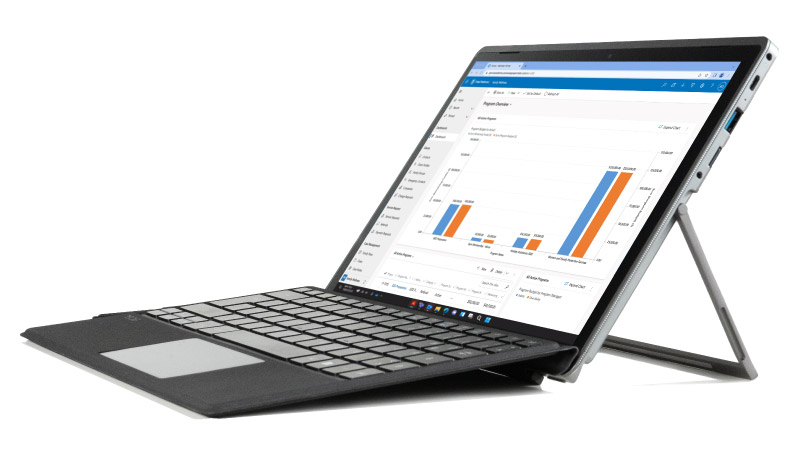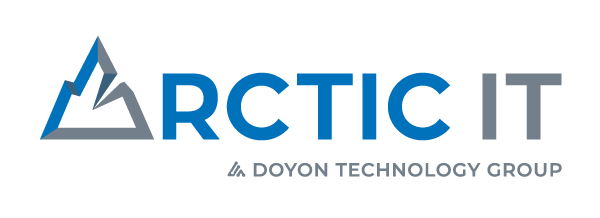Centralized Citizen Data and Tribal Government Services
Case StudyCentralizing citizen data and services for Samish Indian Nation
The Samish Indian Nation is a federally recognized tribe located in the Pacific Northwest. It is governed by a seven-member Tribal Council, which oversees the welfare, legislation, and economic development of the Tribe. Today, tribal leaders uphold the values and traditions of their Samish ancestors while also incorporating modern tools to serve their citizens.

Challenge
Many of the Samish Indian Nation’s tribal citizens are located in the Pacific Northwest. There are other Samish populations across the United States, with pockets in British Columbia Canada, and even some as far as New Zealand. The distributed population makes it challenging for the Enrollment Department to track citizen information. Sometimes programs would have more recent data on a citizen, such as address and phone number, than the Enrollment Department. Enrollment staff were reliant on legacy, on-premises software to manage citizen data, but other departments did not have access and maintained separate citizen information for their program participants. These issues created challenges establishing Enrollment records as the single source of truth for citizen vitals.
The Samish Social Services, Vocational Rehabilitation, and Housing Departments also faced challenges due to a dependence on paper forms. All interdepartmental collaboration required physically sharing information by walking from office to office or emailing documents back and forth. Program data was manually entered into spreadsheets for tracking and reporting to the Tribal Council. There was no centralized repository for interoffice collaboration, and the data was siloed in department folders on a file server, which hindered the ability to gain a comprehensive understanding of how programs were fulfilling citizens’ needs.
The IT Department is responsible for the Tribe’s technological efficiencies and data sovereignty. Inconsistencies in citizen data stored in file folders and spreadsheets, alongside a growing concern over the security of the documents, drove the IT Department to seek out a more effective solution for the Tribe.

Solution
After a thorough review of modern software options, the Samish Indian Nation selected Arctic IT’s Tribal Platforms®; a cloud-based solution built for tribal governments on the Microsoft Power Platform. The transition to the new platform was completed in phases to meet the various needs of the Enrollment, Social Services, Vocational Rehabilitation, and Housing Departments.
Enrollment was the first application deployed. Arctic IT migrated citizen data from the legacy solution and configured the Enrollment app with functionality to track:
- Member contact details (shared by all departments)
- Citizen name and basic contact information
- ‘Member’ and ‘Non-Member’ status
- Blood quantum
- Family tree
- Member profile (confidential to the Enrollment Department)
- Member ID
- Ability to edit citizen name and contact information
- Member change requests
- Enrollment applications
After the successful implementation of the Enrollment app, the Family Wellness app and Citizen Portal were the next priority. The Family Wellness app is a comprehensive case management system that allows the various Social Services teams to track:
- Citizen service requests
- Case departments (such as Indian Child Welfare (ICW) and Victims of Crimes Act (VOCA))
- Case types (such as ICW Support, Advocacy, and Kinship Support)
- Case notes and status
- Indian Child Welfare Act (ICWA) notices and BIA reportable incidents
- Indian Child Welfare (ICW) Quarterly and Annual Report
- Child placements and more
The Citizen Portal was developed to provide Samish Citizens with 24/7 remote access to their information. It is designed to match the look and feel of the Samish Indian Nation’s visual identity to encourage user adoption. Citizens will use the portal to
- Login securely with Member ID
- Request changes to contact information
- Apply for programs and services
- View case plan details, goals, and outcomes
- View payment history
- Provide documents to the Tribe
The last phase of the project was to configure the Tribal Platforms Housing and Distribution Payments apps. Previously, housing payments were individually submitted through a requisition software each month for each citizen participating in the program. This manual process was error prone, repetitive, and time consuming. Arctic IT developed the Housing app to allow the Housing Manager to input a monthly payment amount tied to a recipient’s contact record. Then, the Distribution Payments app would automatically generate the payment every month. This new process allows the Housing Manager to approve monthly housing payments within a single view and quickly export them to a CSV file for the accounting system. The automation eliminates monthly manual entries and improves the accuracy of the payments.
At a platform level, Samish’s Tribal Platforms solution is designed to centralize citizens’ contact information while separating the data that is confidential to each department. Role-based security is also layered in for added information protection. For example, a citizen’s name and address may be visible to all departments, but the Member ID is only visible to those in the Enrollment Department who have authority to view it. If Enrollment updates a citizen’s address, it is updated system-wide for Social Services, Vocational Rehabilitation, and Housing too. The system’s browser-based interface gives all departments a responsive user dashboard that can be accessed from anywhere via a secure single sign-on (SSO).
JR Walters, Executive Director Information Technology at the Samish Indian Nation, played a critical role in guiding the application deployments. “One of the goals was to get everything on ‘one page’ to have control over the access to the platform. [Tribal Platforms] integrates with Microsoft 365 and Entra ID, our main identity platform. It marries well with the security features that we have, such as conditional access and risk-based access to different services and applications,” said Walters.
“We had other goals as well, such as having data in one place. That way we know where that sensitive data resides, and we can better protect it. Another goal was to provide better wrap-around services, de-duplication of efforts and federal funding, and then, some of those efficiencies we can receive from the platform, such as knowing when somebody’s a Samish citizen, knowing their up-to-date address, their contact information, et cetera. All those things were part of the reasons that we went for this solution.”
Results
The Samish Indian Nation now has greater visibility into member data and program reporting. Instead of relying on manual reports in spreadsheets, management can access the system at any time to see real-time, visualized data for the Enrollment, Social Services, Vocational Rehabilitation, and Housing Departments.
Departmental staff are working on a platform that promotes the confidentiality, integrity, and accessibility of citizen data while still supporting the freedom to work remotely when needed. Centralized citizen data increases data accuracy and productivity across the Tribe. The portal will allow citizens to benefit from remote application services and the ability to update contact information with the Administration Campus.
When asked about his advice for other tribal governments considering a cloud platform, Walters responded, “If you’re struggling with cloud adoption because of data sovereignty issues, study how you can still meet your needs while moving to the cloud. If you are hesitant because you’re not sure how to trust infrastructure that you’re not operating, look at the scale of Microsoft’s cloud, the uptimes, and the Trust Center that’s provided there. Look at how other organizations are using it, because it’s pretty prevalent. With the number of features and advancements that are coming out, you’re just going to be behind everyone else if you are not adopting those and being part of at least some of the platform-as-a-service or software-as-a-service applications available.”

